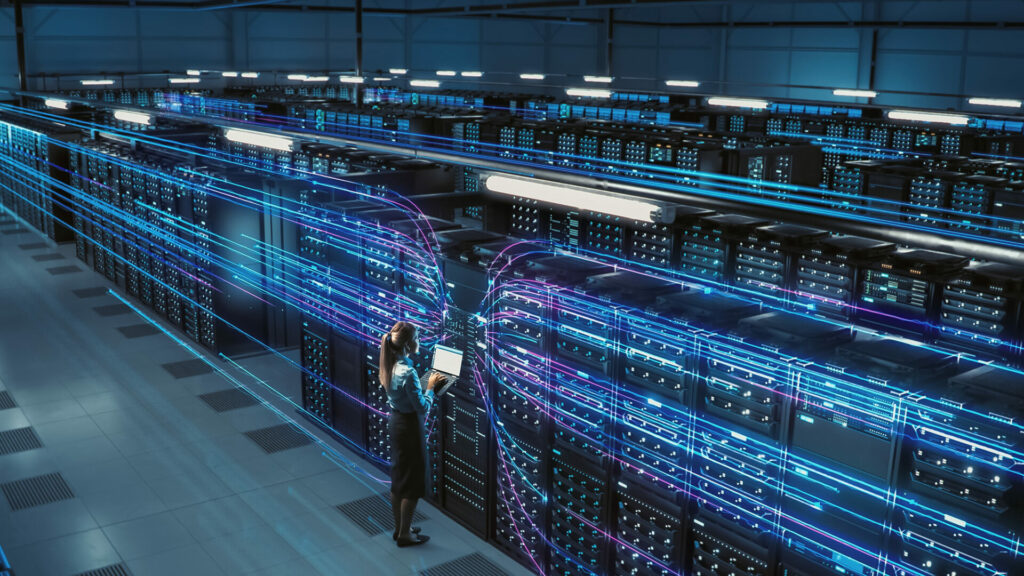When we consider the rapid and all-consuming growth that the global population has experienced over the last couple of decades, it is no surprise that we accept many things readily, and without analysis. Such is the pace of growth and the development of new technologies; individuals are in the unfortunate position of being simply unable to rigorously interrogate everything that enters our domain. It does, however, seem peculiar that one of the most world changing developments ever to emerge has been accepted without any analysis and its negative aspects – on both a physical and environmental level.
The global system of interconnected computer networks dates back to the 1960s. While the internet was developed and funded through research by a number of US governmental departments, its prominence since the mid-90s has been nothing short of unimaginable. The web was growing by 100 percent per year in its early commercialized days and by 2007, it was carrying around 97% of all telecommunicated information. In modern society, it is a native consideration that impacts every conceivable facet of human life with no signs of abating. So, the question that people can obviously answer is, what is the internet? Well, according to a large-scale survey that was conducted in 2019, around 86% of Americans knew what the internet was and, more importantly, how it worked. However, further research discovered that only half of the respondents knew this information. What these mistaken respondents failed to realize is that every click, mail, and message is stored on a hard drive somewhere. In enormous warehouses, thousands of computers are running on a near constant basis, storing and holding the data that we send every second. The warehouses, called data centers, are spread around the globe but they all have a number of things in common. They consume incredible amounts of energy, and they give off a serious amount of heat.

In 2023, as online usage and cloud storage grows to become an indelible aspect of human society, we have become more used to the concept of the data center. These vast warehouses that are filled with the servers which contain and transport our online information are big business. In fact, according to a number of studies, the hardware and software needed to run data centers are estimated to use between 196 terawatt hours (TWh) and 400 TWh per year. This equates to around 2% of global electricity demand. While this may seem large as it is, the figure is expected to grow to a staggering 20% by 2025. In an effort to contain the enormous carbon emissions that is produced by this demand, data centers use as much renewable energy as possible. However, clean energy such as wind, solar and geothermal can only go so far and other energy sources are impractical for either geographical or financial reasons. So, given that the energy needed to run these centers is likely to remain considerable, mitigating initiatives need to be put in place to offset this usage.
Codema is an energy efficiency agency in Dublin, Ireland. Working with a local governmental department, the Tallaght District Heating Scheme, the company has put in place a mechanism to capture the waste heat that is generated from these centers and use it to heat subsidized housing. The scheme is Ireland’s first non-for-profit utility supplier and the project will deliver 100% of its heat demand will be recovered from a nearby Amazon data center. According to John O’Shea, an energy systems analyst at Codema, the potential for unconventional heat sources such as these “could supply as much as 10% of the EU’s total energy demand for heat and water”.
“The goal is to involve and include data centers in the battle towards lowering emissions.”
So, how does it work? Well, the science behind it is not really all that technical. As thousands of servers generate enormous volumes of heat, typically this would have been simply piped outside into the air. However, by channeling it into underground water systems which run below the city, homes, offices, and other buildings are heated through residential piping networks.
Alongside Ireland, Sweden is fully investing in harnessing the power of data center heat. To this end, it has developed Stockholm Data Parks, a joint initiative between the City of Stockholm, district heating and cooling provider Stockholm Exergi, power grid operator Ellevio, and dark fiber provider Stokab. According to those involved, the goal is to involve and include data centers in the battle towards lowering emissions. “Our vision is a data center industry where no heat is wasted. We see data center excess heat as a valuable resource that can be part of fighting climate change. The City’s objective is to be entirely fossil fuel free by 2040, and we invite data centers to play a key role in this transition.”

As part of the bigger picture, this project is part of Stockholm’s plan towards developing a network of sustainable data centers. However, there is recognition that this will not be happening quickly. That is why heat recycling is a vital step in the transition plan. “We believe that green data centers of the future will source sustainable electricity to minimize their environmental impact. In this transition, Stockholm Exergi is making the same commitment, adding renewable capacity to the system for its electricity use in Stockholm Data Parks. With heat recovery, fuel resources used for incineration can be conserved and CO2 emission reduced.” Incredibly, it seems that due to their enormous scale, the potential reach of these data centers is a large one. “With a data center load of 10 MW, around 20 000 modern residential apartments (55 kWh/m2 per year) could be heated.”
As we face into a conflicted future where the benefits of our technological advancements are now being weighed against the environmental impact, we must take responsibility for the energy we consume with every click of a mouse. Somewhere, our words are being housed in a warehouse alongside thousands of other servers. It is a difficult thought to conceptualize yet it is something that needs to become acceptable. The internet is not a concept, or an idea, it is a huge series of computers that consume massive amounts of energy. With the growth of online living only moving in one direction, it seems as though the answer is to mitigate somehow. As those in both Dublin and Stockholm are demonstrating, this can be achieved by simply thinking outside the box. “We believe it’s a win-win concept where the data center industry can reach the next level in cost efficiency and sustainability, and at the same time be part of the City’s transition to a fully sustainable energy system.”


















